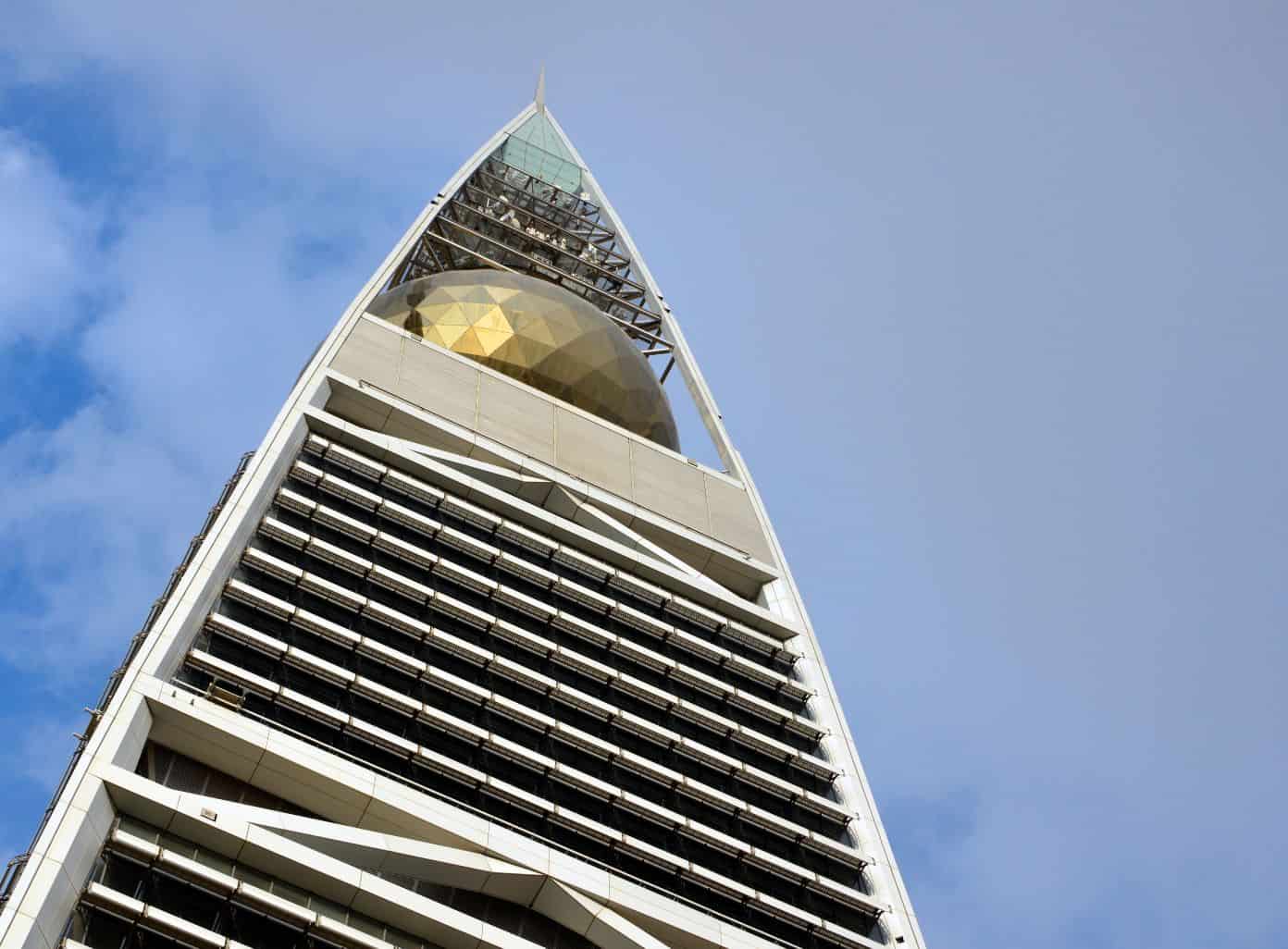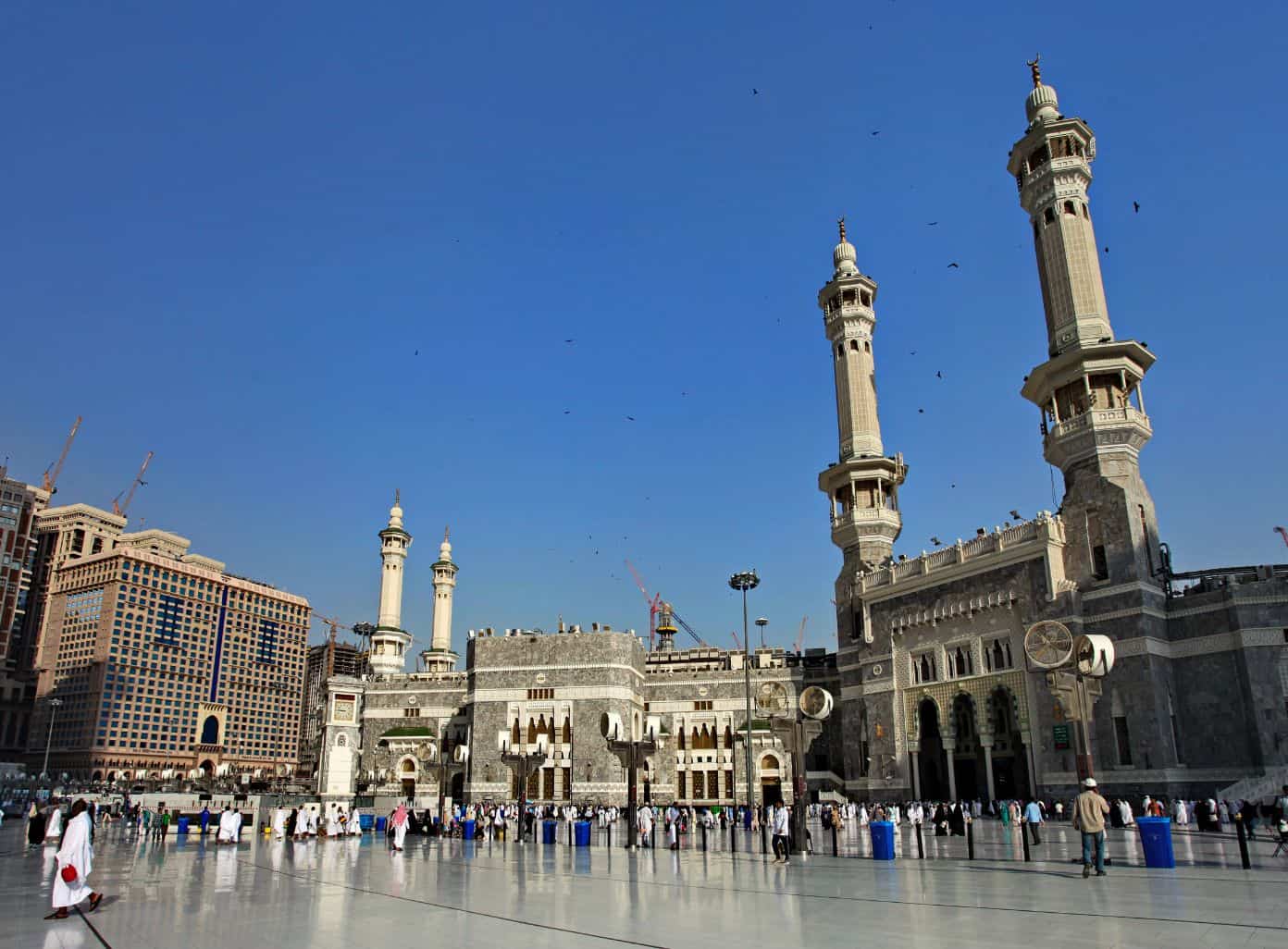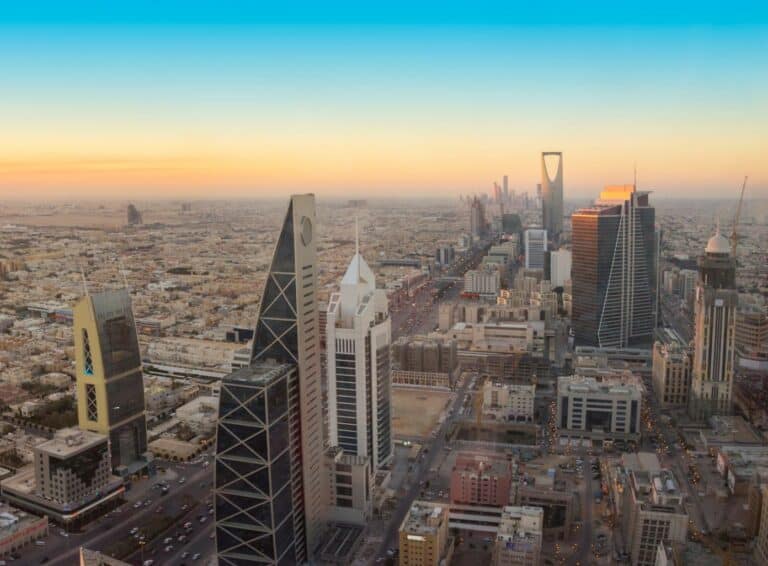Exploring Saudi Arabia
Saudi Arabia, with its rich cultural heritage and captivating landscapes, has emerged as a vibrant tourist destination. From ancient historical sites to modern architectural marvels, the country offers a diverse range of attractions that cater to all types of travelers.

Introduction to Saudi Arabia as a Tourist Destination
Saudi Arabia, located in the heart of the Middle East, is a land of breathtaking beauty and cultural significance. It is home to iconic landmarks, ancient ruins, and stunning natural landscapes that leave visitors in awe. With its recent efforts to promote tourism, the country has opened its doors to international travelers, inviting them to explore its hidden gems.
From the bustling cityscapes of Riyadh, the coastal charm of Jeddah, to the spiritual center of Islam in Mecca and Medina, Saudi Arabia provides a unique blend of modernity and tradition. Whether you’re fascinated by towering skyscrapers, historical sites, or serene natural wonders, Saudi Arabia has something to offer every traveler.
Cultural Significance of Saudi Arabia
Saudi Arabia holds immense cultural significance as the birthplace of Islam and the home of the two holiest cities in Islam, Mecca and Medina. Millions of Muslims from around the world undertake the pilgrimage to these sacred cities every year, making it a deeply spiritual experience.
The country’s cultural heritage is also reflected in its traditional music, calligraphy, pottery, and art galleries, showcasing the rich artistic expressions of the Saudi people. Visitors can immerse themselves in the vibrant local culture by exploring the ancient ruins, participating in falconry, or indulging in delicious street food.
Moreover, Saudi Arabia’s commitment to preserving its natural beauty is evident in its national parks and eco-tourism initiatives. Travelers can embark on breathtaking adventures in the mountain ranges, explore the diverse wildlife, or relax in luxury resorts nestled amidst picturesque landscapes.
As you plan your visit to Saudi Arabia, it’s important to familiarize yourself with the country’s visa requirements and travel restrictions. Additionally, respecting the cultural etiquette and adhering to the dress code is essential to ensure a respectful and enjoyable experience. For more information on the best time to visit and must-have experiences in Saudi Arabia, refer to our article on things to do in Saudi Arabia.
Saudi Arabia’s tourist attractions are a testament to its rich cultural heritage and natural wonders. Embark on a journey to this captivating destination and discover the splendor that awaits you.
Riyadh: The Modern Capital
As the modern capital of Saudi Arabia, Riyadh offers a captivating blend of tradition and modernity. This vibrant city is home to a plethora of iconic landmarks and provides visitors with a range of immersive cultural experiences.
Riyadh’s Iconic Landmarks
Riyadh boasts an impressive skyline adorned with towering skyscrapers that showcase the city’s modern architecture. The iconic Kingdom Centre Tower is a must-see attraction, offering panoramic views of the city from its observation deck. Another notable landmark is the Al Faisaliah Tower, known for its distinctive glass globe perched atop the building.
For those interested in history and culture, a visit to Diriyah, the historic heart of Riyadh, is a must. Explore the UNESCO-listed At-Turaif District, which features traditional mud-brick buildings and ancient palaces that tell the story of Saudi Arabia’s rich heritage. Don’t forget to visit the National Museum of Saudi Arabia to delve deeper into the country’s fascinating history.
Immersive Cultural Experiences in Riyadh
To truly immerse yourself in Riyadh’s culture, make sure to visit the Souq Al Zal, a traditional market where you can browse through a wide range of local crafts, spices, and textiles. Experience the vibrant atmosphere of the souq as you interact with local vendors and sample delicious traditional snacks.
For a taste of Saudi Arabian hospitality, consider visiting a traditional Saudi home. Many locals open their homes to tourists, allowing them to experience authentic Saudi Arabian customs, cuisine, and hospitality. This unique opportunity provides a glimpse into the warmth and generosity of the Saudi people.
To learn more about the captivating traditional arts of Saudi Arabia, visit the King Abdulaziz Center for World Culture. This cultural hub showcases a variety of artistic disciplines, including traditional music, calligraphy, and pottery. Immerse yourself in the beauty of Saudi Arabian art and gain a deeper appreciation for the country’s rich cultural heritage.
Riyadh offers a perfect blend of modernity and cultural heritage, making it a captivating destination for visitors. Explore the city’s iconic landmarks, immerse yourself in the local culture, and create unforgettable memories in the heart of Saudi Arabia. For more information on traveling to Saudi Arabia, check out our comprehensive Saudi Arabia travel guide.
Jeddah: Gateway to the Red Sea
Jeddah, known as the Gateway to the Red Sea, is a vibrant city in Saudi Arabia that offers a captivating blend of history, culture, and coastal charm. This section will explore the architectural marvels and the enjoyable coastal charm that Jeddah has to offer.
Jeddah’s Architectural Marvels
Jeddah is renowned for its stunning architectural landmarks that showcase a harmonious blend of traditional Islamic design and modern influences. The city’s skyscrapers, such as the Kingdom Centre and the Jeddah Tower, dominate the skyline and offer breathtaking views of the city and the Red Sea. These towering structures are a testament to the city’s modern development and architectural prowess. To learn more about the skyscrapers in Saudi Arabia, visit our article on saudi arabia skyscrapers.
In addition to the skyscrapers, Jeddah is also famous for its unique landmarks. The iconic King Fahd Fountain, the tallest fountain in the world, mesmerizes visitors with its impressive water display. The historic district of Al-Balad showcases traditional Arabian architecture with its intricately designed buildings, narrow alleyways, and bustling marketplaces. For more information on the landmarks of Saudi Arabia, check out our article on saudi arabia landmarks.
Enjoying the Coastal Charm of Jeddah
Situated along the coast of the Red Sea, Jeddah offers a delightful coastal charm that attracts locals and tourists alike. The city boasts pristine beaches where visitors can relax, swim, and engage in various water activities. The vibrant and bustling Jeddah Corniche is a popular waterfront promenade that stretches for miles, offering stunning views of the Red Sea and a lively atmosphere. For those seeking a luxurious beachside experience, Jeddah is home to several beach resorts that provide a tranquil and upscale setting. Explore our article on saudi arabia beach resorts for more information.
Apart from the beaches, Jeddah is known for its vibrant art scene. The city is dotted with numerous art galleries and museums that showcase both local and international artworks. The vibrant street art scene in Jeddah adds a colorful touch to the city’s urban landscape. For art enthusiasts, a visit to Jeddah’s art galleries is a must. To delve deeper into the art scene in Saudi Arabia, visit our article on saudi arabia art galleries.
Whether you’re exploring the architectural marvels or enjoying the coastal charm, Jeddah offers a unique and unforgettable experience. The city’s blend of modernity, tradition, and natural beauty creates a captivating atmosphere that will leave a lasting impression. Make sure to include Jeddah in your itinerary when visiting Saudi Arabia to fully immerse yourself in its cultural and coastal splendor.

Mecca: Spiritual Center of Islam
Mecca holds a special place in the hearts of Muslims worldwide as the spiritual center of Islam. Every year, millions of Muslims from around the globe make the sacred journey of Hajj or Umrah to this holy city. Mecca is home to two significant attractions that are deeply revered by Muslims: the Grand Mosque and the Kaaba.
The Grand Mosque and Kaaba
At the heart of Mecca stands the magnificent Grand Mosque, also known as Masjid al-Haram. This awe-inspiring mosque surrounds the holiest site in Islam, the Kaaba. The Kaaba is a sacred black cube-shaped structure that Muslims believe was built by the Prophet Ibrahim (Abraham) and his son Ismail (Ishmael), as directed by Allah.
The Grand Mosque is a sprawling complex that can accommodate millions of worshippers during Hajj and Umrah. Its most striking feature is the Kaaba, which stands at the center of the mosque. Muslims face the Kaaba during their prayers, no matter where they are in the world. The Kaaba is draped in a black cloth adorned with gold calligraphy and is considered the focal point of the Islamic faith.
Pilgrimage Experience in Mecca
For Muslims, the opportunity to perform Hajj or Umrah in Mecca is a deeply meaningful and spiritually enriching experience. Hajj is the annual pilgrimage that takes place during the Islamic month of Dhu al-Hijjah, while Umrah can be performed at any time of the year.
During Hajj, pilgrims carry out a series of rituals that commemorate the trials and tribulations faced by the Prophet Ibrahim and his family. These rituals include circling the Kaaba seven times (known as Tawaf), walking between the hills of Safa and Marwa (known as Sa’i), spending a night in the plain of Mina, and culminating in the symbolic stoning of the devil in Mina.
Umrah, on the other hand, involves similar rituals but on a smaller scale. It is an opportunity for Muslims to visit Mecca and perform acts of worship, such as Tawaf and Sa’i, outside the designated Hajj season.
For both Hajj and Umrah, it is essential for pilgrims to be well-prepared, both physically and spiritually. It is recommended to refer to a comprehensive guide or consult with a knowledgeable source to ensure a smooth and fulfilling pilgrimage experience.
Visiting the Grand Mosque and witnessing the unity of millions of worshippers from different backgrounds is a profound experience that leaves a lasting impact on the hearts of those who have the opportunity to visit Mecca. The spiritual significance of Mecca as the birthplace of Islam and the home of the Grand Mosque and Kaaba cannot be overstated.
Note: Entry to the Grand Mosque is restricted to Muslims only. Non-Muslims are not permitted to enter the mosque or the Kaaba.
Medina: The City of the Prophet
Located in the western region of Saudi Arabia, Medina holds immense religious significance as the second holiest city in Islam. It is home to numerous historical and spiritual sites that attract pilgrims and tourists from around the world. Exploring Medina allows visitors to immerse themselves in the rich history and culture of Islam.
Al-Masjid an-Nabawi
The centerpiece of Medina is Al-Masjid an-Nabawi, also known as the Prophet’s Mosque. This grand mosque holds a special place in the hearts of Muslims worldwide. It was built by the Prophet Muhammad himself and served as his final resting place. The mosque has been expanded over the centuries and can now accommodate millions of worshippers during peak times, especially during the holy month of Ramadan.
With its stunning architecture and intricate details, Al-Masjid an-Nabawi is a sight to behold. The main prayer hall features beautiful green and gold accents, while the courtyard is adorned with palm trees and fountains. Visitors can witness the peaceful atmosphere as worshippers gather for prayers and contemplation.
Historical Sites in Medina
In addition to Al-Masjid an-Nabawi, Medina is home to several other historical sites that offer a glimpse into the city’s rich past. One such site is Quba Mosque, the first mosque in Islamic history. It holds a special place in the hearts of Muslims and is often visited by pilgrims upon their arrival in Medina.
Another significant historical site is Qiblatain Mosque, where the direction of prayer (qibla) was changed from Jerusalem to Mecca during the time of the Prophet Muhammad. This mosque holds great historical and spiritual significance, attracting visitors who wish to learn more about the early days of Islam.
Exploring the historical sites in Medina allows visitors to connect with the roots of their faith and gain a deeper understanding of Islamic history. It is a humbling experience that leaves a lasting impression on all who visit.
To learn more about other tourist attractions in Saudi Arabia, including Riyadh and Jeddah, continue reading our comprehensive travel guide on saudi arabia tourist attractions.
Al-Ula: Ancient Wonders
Located in the northwestern region of Saudi Arabia, Al-Ula is a treasure trove of ancient wonders that will transport you back in time. This captivating destination is home to UNESCO World Heritage Sites and offers breathtaking natural beauty.
UNESCO World Heritage Sites in Al-Ula
Al-Ula boasts several UNESCO World Heritage Sites that showcase the rich history and cultural heritage of the region. These sites include:
- Madain Saleh: Also known as Al-Hijr, Madain Saleh is an extraordinary archaeological site featuring well-preserved tombs carved into the sandstone cliffs. This ancient Nabatean city was once an important trading hub along the incense route.
- Hegra: Hegra, another name for Madain Saleh, is the largest conserved site of the Nabatean civilization outside of Jordan. The site is home to more than 100 tombs, many adorned with intricate carvings and inscriptions.
- Dadan: The ancient city of Dadan takes visitors back to the time of the Lihyanite and Nabatean civilizations. Explore the ruins of palaces, tombs, and an impressive water distribution system that demonstrates the advanced engineering skills of its inhabitants.
- Jabal Ikmah: Jabal Ikmah is a mountain featuring a collection of inscriptions and rock art that date back thousands of years. The inscriptions provide valuable insights into the cultures and civilizations that thrived in the region.
Exploring Al-Ula’s Natural Beauty
In addition to its historical sites, Al-Ula is blessed with stunning natural landscapes that are worth exploring. The region is characterized by its towering sandstone formations, deep canyons, and vast desert expanses. Some notable natural attractions in Al-Ula include:
- Elephant Rock: This natural rock formation resembles an elephant, hence its name. Marvel at the intricate details sculpted by wind and time, and capture memorable photos against the backdrop of this unique landmark.
- Al-Ula Oasis: The Al-Ula Oasis is a lush green haven amidst the desert, providing respite from the arid surroundings. The oasis is dotted with date palm groves and offers a serene atmosphere for relaxation and contemplation.
- Mountains of Al-Ula: The mountain ranges surrounding Al-Ula are a paradise for outdoor enthusiasts. Embark on hiking or rock climbing adventures to discover the region’s hidden gems and enjoy panoramic views of the desert landscape.
- Valley of the Tombs: The Valley of the Tombs is a captivating area filled with ancient tombs, carved facades, and rock formations. Take a leisurely stroll through this historical valley and soak in the atmosphere of the past.
Visiting Al-Ula is an opportunity to witness the fascinating blend of ancient history and natural beauty. Remember to respect the cultural heritage of the region and follow any guidelines or restrictions in place to ensure the preservation of these remarkable sites. For more information on travel requirements and other attractions in Saudi Arabia, refer to our comprehensive Saudi Arabia travel guide.
Tips for Visiting Saudi Arabia
Planning a trip to Saudi Arabia? Here are some essential tips to keep in mind before embarking on your journey. From visa requirements and travel restrictions to cultural etiquette and dress code, these guidelines will help ensure a smooth and enjoyable experience. Additionally, we’ll highlight the best time to visit and some must-have experiences to make the most of your trip.
Visa Requirements and Travel Restrictions
Before traveling to Saudi Arabia, it’s important to familiarize yourself with the visa requirements and any travel restrictions that may be in place. The specific requirements may vary depending on your country of citizenship. It is advisable to check with the nearest Saudi Arabian embassy or consulate for the most up-to-date information regarding visa applications.
Cultural Etiquette and Dress Code
Saudi Arabia has a rich cultural heritage, and it is essential to be respectful of local customs and traditions. Dress modestly, particularly when visiting religious sites or public places. Women are required to wear an abaya (a loose-fitting black cloak) in public, and it is recommended to cover your hair with a headscarf. Men should dress modestly and avoid wearing shorts.
Respect for Islamic customs is vital. Avoid public displays of affection, refrain from consuming alcohol in public, and be mindful of local sensitivities. For a more comprehensive guide on cultural etiquette, check out our article on Saudi Arabia travel guide.
Best Time to Visit and Must-Have Experiences
Saudi Arabia experiences extreme temperatures, so it is crucial to plan your visit accordingly. The best time to visit is during the milder months of November to March, when temperatures are more comfortable for outdoor activities and sightseeing. However, keep in mind that some attractions may be crowded during peak tourist season.
While in Saudi Arabia, be sure to explore the iconic landmarks, such as the skyscrapers in Riyadh and the architectural marvels of Jeddah. Immerse yourself in the rich history and spirituality of Mecca and Medina, including the awe-inspiring Grand Mosque and the Prophet’s Mosque.
To truly appreciate Saudi Arabia’s natural beauty, visit destinations like Al-Ula, known for its UNESCO World Heritage Sites and stunning landscapes. Don’t forget to experience traditional music, calligraphy, and pottery to get a taste of Saudi Arabia’s cultural heritage.
By following these tips and suggestions, you’ll be well-prepared to navigate Saudi Arabia’s unique cultural landscape and make the most of your visit. Remember to always stay informed about any travel advisories and respect local customs to ensure a memorable and respectful experience.


